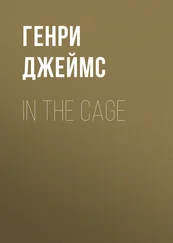This isn’t helping.
She flipped to the front and began to read how to operate the Grundig radio instead. If anyone was out there, she was going to find them.
* * *
All right. Sophie put down her Thermos and blew warm air between her fingers. I can do this.
She opened the shortwave radio’s aluminum faraday cage and pulled it out. The shield panel read “RADIO /// TRANSCEIV” in the same spray-painted stencils that Tom had used on the steel barrels which were situated outside the snow-closure gate of the waterfall canyon.
She pulled the Grundig out of its spring-sockets, and readied a new pair of lithium-ion batteries in case the current batteries were dead. If the contacts were corroded or if the batteries had ruptured, she would clean and replace them. She believed she had learned how.
Okay.
She flipped a switch, and a glaring white LED light came on. Wrong one. But it was good to know, the radio had an emergency flashlight embedded in its side. She flipped it off and hit a switch on the other edge. The radio came on. The redline in the power indicator whirred right up to three-quarters strength, batteries still operational.
Yes!
There was no sound coming out yet. She flipped the next page in the open binder and checked the radio’s speakers and connectors, all were solid. Turning the unit, she saw what the problem was and she felt a little ashamed at its obviousness: the volume was fine, the headphones were plugged in. She unplugged them, and a shrill, piercing cascade of white noise and static assailed her already-bloodied ears.
Cursing, she turned the volume down from 7.7 to 2.0. Static screams, pulses of electronic thunder and sibilant hisses, never-ending. Such was become the voice of the burning world.
She flipped the band selector, then looked again at Tom’s tape with the many arrow marks pasted carefully adjacent to the radio’s primary dial array — he had the default set to the citizens’ band at twenty-seven megahertz. But there would not be anything out there.
Taking in a deep breath and holding it, Sophie pulled out the notebook and the single pen she had found, then plugged the headphones back in and placed the foam ear-pad cushions over her still-ringing ears.
It was too quiet. She pushed the volume up to 2.5 then 3.0, and the low static murmur of nothing out there seemed to growl its approval.
So, then. It was time to start hunting for survivors.
She was still holding her breath. She couldn’t help it. She referred to the binder again, flipping to Tom’s list of resident National Oceanic and Atmospheric Administration Weather Radio stations. If anyone from the government was still alive and somehow had the power and infrastructure remaining to broadcast, they would be out there on NOAA. Those stations were the country’s network of FCC Emergency Alert System broadcasters in case of any catastrophe. Hopefully, the radio dish and antenna above the waterfall were still intact. The alternatives, if the nuclear blasts’ shockwaves had rebounded down into the canyon and destroyed the array, did not bear thinking about.
Okay. You can’t help them, they can’t help you. You can figure out the microphone later if you find someone you need or want to talk to. Focus, Sophie. She breathed again into her trembling hands, then put her fingers back to the controls. She upped the volume to 3.5 and was good to go. Just listen. Take notes. Listen.
There were twenty-seven Colorado transmitting stations listed in Tom’s printout, starting at frequency 162.400. With power set to 300, it was time to go searching.
Dillon transmitter, 162.400-300, WFO Boulder. Nothing.
She used the fine tuning knob to crawl across the sub-decimal frequencies as slowly as she could, making certain that no opportunity for contact would be missed.
Durango, 162.425-300, WFO Grand Junction. Too far across the mountains, perhaps? She still did not quite understand the limitations of the shortwave radio’s range. And nothing.
Franktown, 162.450-300, WFO Boulder once again. Nothing.
Was she doing this right? She sighed and flipped through the binder, keeping her bandaged index finger marking the NOAA call sign page. There was too much information about linked repeaters, radio scanners, transceiver settings, short-wave propagation, QSL cards, VHF transmissions, Skywave propagation…
“Just tell me how the fuck to operate this thing,” she muttered. She gave up on the binder and crawled the frequencies a little further.
Mead-Longmont, 162.475-300. She gasped.
Was that a voice? A voice made of screams and static?
Her finger, still moving, sifted the fine tuner up and onward, over to 162.500. The human-like cries of static from Mead-Longmont went away.
“Damn it.”
She turned the volume up to 3.5, tuned back down to 162.475 to listen again. Nothing.
She waited. Turn the volume up. Louder. She held her breath.
Still nothing, only that inhuman cascade of static and silence. No cries for help, or anything else resembling a human voice.
Furious with herself, she wrote down the figures in the notebook. The pen’s ink was red, and the pen itself so old that the fill tube had yet to scratch more than a trace of red out across the page. She licked an unbandaged finger and touched it to the tip of the ballpoint, as if that would do any good. She was scratching at the paper more than she was writing, but the impression left on the page was still readable in the light.
Still nothing on 162.475. She would try there again later, when she had a better understanding of what the hell she was doing.
Next station on the list. She checked Tom’s table, saw that it would be 162.525-300 Fort Morgan, halfway to Colorado’s borders with Kansas and Nebraska. Fort Morgan was well out in truckers’ paradise, out there in what Sophie always thought of as the middle of nowhere. Too far, perhaps, to even try. What did it matter? She turned the dial —
“—eet Jesus, can anyone hear us? Help us, if you, if you are anywhere near us! God help us, please, we have at least six hundred wounded here and rad sickness triage, so many dying, children, babies, a woman just gave birth and now she’s gone, we don’t, we…”
A burst of static. And seconds later:
“—egging you, anyone, we’ve got, we’ve got one doctor and three nurses and seven emerg—”
Sophie pulled off the headphones, her mouth gaping open in a silent scream of disbelief.
“Oh God.” That was her own voice, in tears. Her breath was frantic. “Oh, oh God. No. Oh, no.”
She couldn’t do this. She was trying. But…
Okay, I can . But not all at once. Please.
“They’re all dying,” she was saying to herself, arguing with her fear. “Give them the honor of being there, even if they don’t know you’re there. Listen to them. If not now, when? When, Sophie?”
They were out there, dying horribly. Innocent people, mothers, children. And what could she do about it?
Okay. I’m trying. Trying.
She needed to calm down. She would write down 162.525 for later, when she had the microphone operational and when she had decided if she should make contact with someone. But what could she say to such a person? There was no help that she could give. Six hundred people, all dying in one place? She looked around the shelter, its air vents, its water tanks and electricity, and felt once again ashamed.
All for me alone.
When she put the headphones back on, she had deliberately switched from the fine tuner to the broad tuner and flipped the frequency, Coward, weak, well beyond the screams on 162.525.
Читать дальше












